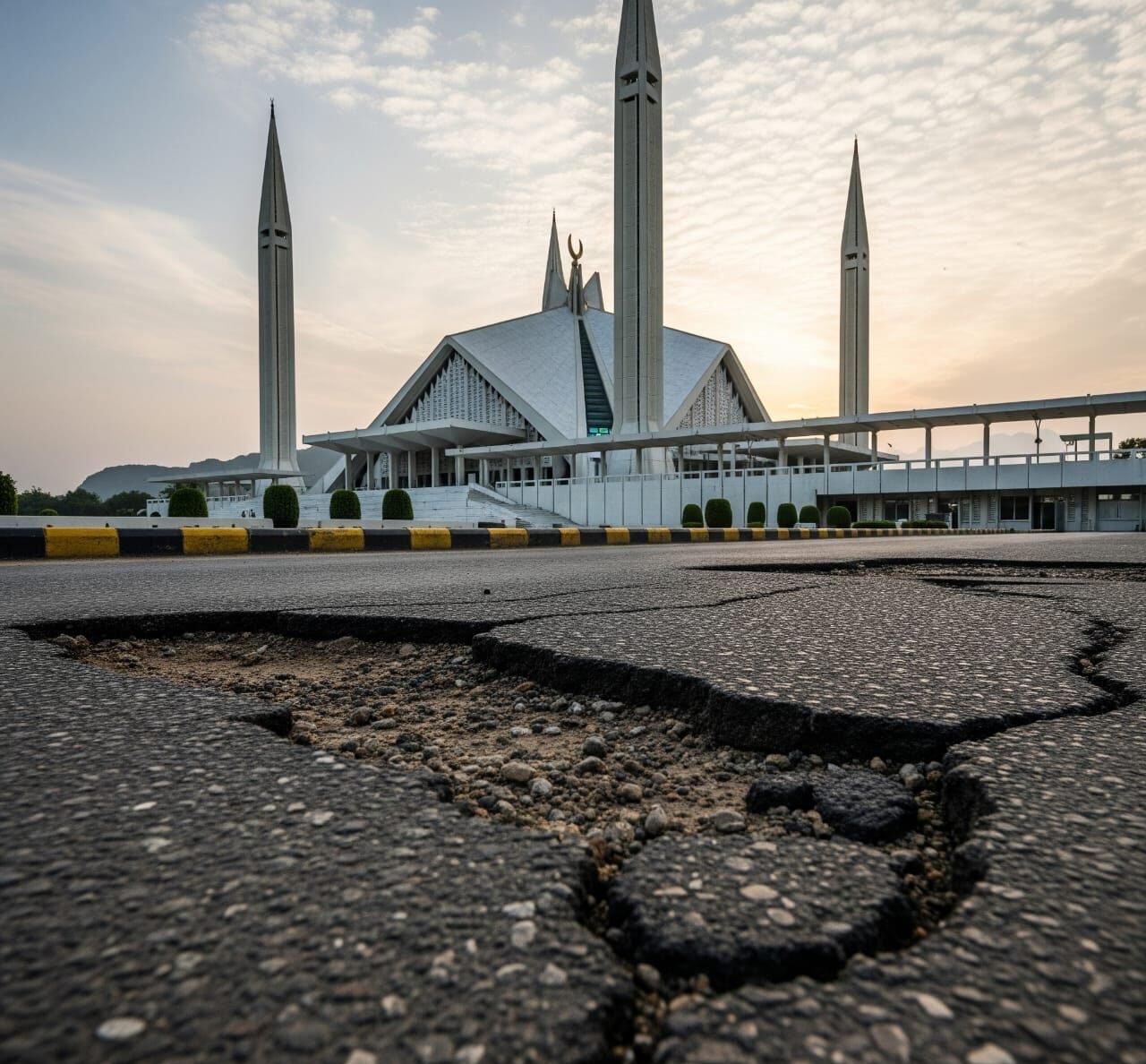A sudden 5.2 Magnitude Quake Jolts Islamabad, Rawalpindi, Other Citiesse waves of panic across several cities in northern Pakistan on Tuesday, forcing people to rush out of homes, schools, and offices in fear. Tremors were felt strongly in Islamabad, Rawalpindi, Peshawar, Abbottabad, Mansehra, and nearby areas.
Luckily, no casualties or major damage have been reported so far, but the quake has once again highlighted Pakistan’s vulnerability to deadly seismic activity.
Where Was the Epicenter?
According to the Pakistan Meteorological Department (PMD), the quake measured 5.2 on the Richter scale and originated at a depth of about 150 kilometers. Its epicenter was located near the Hindu Kush mountain range in Afghanistan — one of the most earthquake-prone regions in the world, where the Indian and Eurasian tectonic plates collide.
Because of this, tremors from the Hindu Kush are often felt across large parts of Pakistan, especially in the northern belt including Islamabad and Rawalpindi.X
Cities That Felt the Shaking
- Islamabad & Rawalpindi: Furniture shook, windows rattled, and ceiling fans swayed as residents rushed out of buildings. High-rise apartments saw the biggest panic.
- Peshawar & Khyber Pakhtunkhwa towns: Tremors lasted several seconds, causing schools and offices to pause activity as people gathered in open spaces.
- Abbottabad & Mansehra: Residents described the quake as “moderately strong” and remained outdoors fearing aftershocks.
- Azad Kashmir & northern Punjab: Light tremors were reported, though no damage occurred.
Panic on the Streets
The tremors sparked chaos, especially in densely populated areas. In Islamabad, residents ran down staircases and gathered in parking lots, while in Rawalpindi, families stood barefoot on streets, reciting prayers.
Within minutes, social media platforms were flooded with posts and videos of people reacting to the quake. Many expressed relief that no destruction was reported but also stressed the need for better earthquake preparedness.
No Losses, But Fresh Fears
The National Disaster Management Authority (NDMA) confirmed no casualties or infrastructure damage. Still, emergency services were placed on high alert, hospitals were told to stay ready, and rescue teams were put on standby. READ NEXT https://elevenpakistan.com/nadeen-ayoub-first-palestine-at-miss-universe/
For many, the quake revived painful memories of the 2005 Kashmir earthquake, which killed over 80,000 people, as well as other tremors in 2015 and 2023.
Why Pakistan is at Risk
Pakistan sits in a seismically active zone, where the Indian and Eurasian plates meet. This makes regions like Khyber Pakhtunkhwa, Gilgit-Baltistan, and northern Punjab especially prone to earthquakes.
Experts warn that while small quakes are frequent, the risk of a major, devastating earthquake remains high. They regularly urge the government to enforce building codes, strengthen infrastructure, and raise awareness about safety drills.
Authorities Responded
Soon after the quake, the PMD shared details, calling the tremors “moderate.” NDMA released advisories urging citizens to stay calm but vigilant.
- Emergency helplines were activated in Islamabad and Rawalpindi.
- Rescue teams were kept on standby.
- Local authorities patrolled key areas to monitor safety.
Officials stressed that preparedness is key, from earthquake drills to ensuring high-rise buildings follow safety codes.
What Residents Experienced
Eyewitnesses described the quake as lasting 15 to 20 seconds — long enough to trigger chaos.
- In Islamabad’s Blue Area, office workers evacuated tall buildings.
- Schools moved children into playgrounds as teachers led emergency drills.
- Families clutched children and ran outside barefoot, fearing aftershocks.
Lessons From the Past
Pakistan has improved disaster management since the 2005 tragedy, but older buildings and poor urban planning remain a major risk. Experts continue to push for:
- Public education on safety techniques like “Drop, Cover, and Hold On.”
- Emergency kits in homes with food, water, and medical supplies.
- Enforcement of building codes for quake-resistant structures.
- Regular drills in schools and offices.
The Bigger Picture
While Tuesday’s 5.2 quake caused no casualties, seismologists warn it should be treated as a wake-up call. Smaller tremors often release pressure but can also signal the buildup of seismic energy along fault lines.
For Pakistan, the path forward lies in stronger infrastructure, better preparedness, and public awareness — because when the “big one” strikes, every precaution will count.
Final Word
The earthquake that shook Islamabad, Rawalpindi, and northern cities may not have caused visible destruction, but it has rattled nerves.
For millions living in quake-prone areas, it’s a stark reminder: earthquakes cannot be stopped, but their impact can be minimized. Preparedness today could save countless lives tomorrow.
READ MORE



